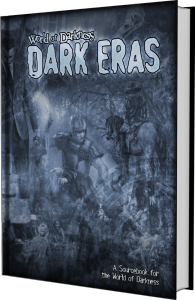
I was going to talk about Mary Stewart and The Crystal Cave today, but instead I’m going to talk about personas. I’ve been meaning to do this for a while as a follow-up to some posts I’ve offered in the past like this one and this one, but esteemed writer Wesley Chu reminded me of what I’ve been meaning to say. I say all of this with love and my repeated mantra: do what works for you.
I don’t care about personas any more. You know, I used to. Being in marketing and business as long as I have, I thought they were important and expected, a much-needed tool to fabricate an image to be memorable. Me? I’d rather be true to myself and worry less about how that’s perceived and received “officially” via a persona. I am a seeker of change and growth, personally and professionally, and I hope that’s reflected in not only what I do, but how, when, and what tools I use to pursue my goals–regardless of the fact that all too often the internet, in particular, never seems to forget a faux pas!
I asked myself, when thinking about personas a few years back, what I care about when I interact with fans, peers, and professionals. Being someone I’m not online takes work, because I have to remember who that persona is in real life interactions, meetings, and correspondence. That’s a helluva lot of work to play that role, and that is so anti-everything “Monica” it’s not even funny. Plus, and I ran into this quite a bit, my audiences overlap so much I couldn’t separate out Monica the Persona for TheDayAndNightJobTM versus Monica the Human Being who has friends and loved ones.
Instead, what I worry about is being a good person. Yes, sometimes, I worry about this too much. I feel terrible about it, but I had challenges remaining positive going to conventions not knowing anybody because I was intimidated and didn’t understand the differences between PERSONATM I met online and HUMAN BEINGTM in real life. That’s nothing anybody else did; that’s my issue. Anyway, to me being a good person means that I need to be someone other people want to be around, and too often personas, when not done well, can be a disillusionment, a turnoff, an extreme aspect of a personality, a permanently attached soapbox that controls the person inside, etc. I also see through them fairly easily, because of my background. Big name celebrities? Need personas. Not only is it part of their job, it’s a coping mechanism to deal with that many people. However, right now I am not a “big name” celebrity. When and if I ever get to that point, then maybe I’ll reconsider. But for now, I’m a WYSIWIG person. What you see, is what you get. Energy levels, as always, are dependent upon caffeine.
Over and out.
Mood: In a state of zen. Wait… Are the cats up to something?
Caffeinated Beverages Consumed: More than I care to admit and less than I’d like to believe.
Work-Out Minutes Logged Yesterday: Well? If my achilles tendon ever heals…
In My Ears: Lady Crescent Moondragon’s tank, yet another pot of coffee…
Game Last Played: Ni-No Kuni Wrath of the White Witch
Book Last Read: The Greywalker series
Movie Last Viewed: Sabotage
Latest Artistic Project: Ch-ch-ch-ch-chainmaille!
Latest Fiction/Comic Release: Last Man Zombie Standing.
Latest Game Release: Things Don’t Go Smooth
What I’m Working On: Primarily tie-in games work, original comics, and novels.



